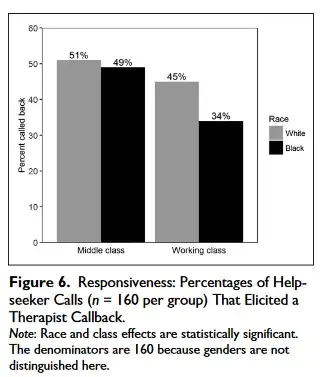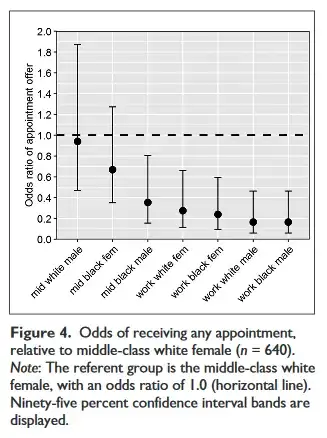In the comments, Tim helpfully links the original study (pdf).
Are these numbers accurate?
I went quickly through it and the answer is not quite.
Did the study find a [...] difference based off of race?
According to the paper, yes when considering callbacks.

No when considering overall chances of getting any appointment. (there is no difference among the working class, there is a difference within the middle class)

Images added according to fair use, as suggested by Oddthinking in the comments.
To answer the questions in the comment about "actual income":
Voice-over artists recorded scripted messages using racially distinctive names and adopting specified race- and class-based speech patterns.
To answer the question about insurance (emphasis mine):
On the recordings, the help seekers each mentioned symptoms of depression or anxiety, named the same health insurance plan, requested an appointment, and indicated a preference for a week-day evening.

